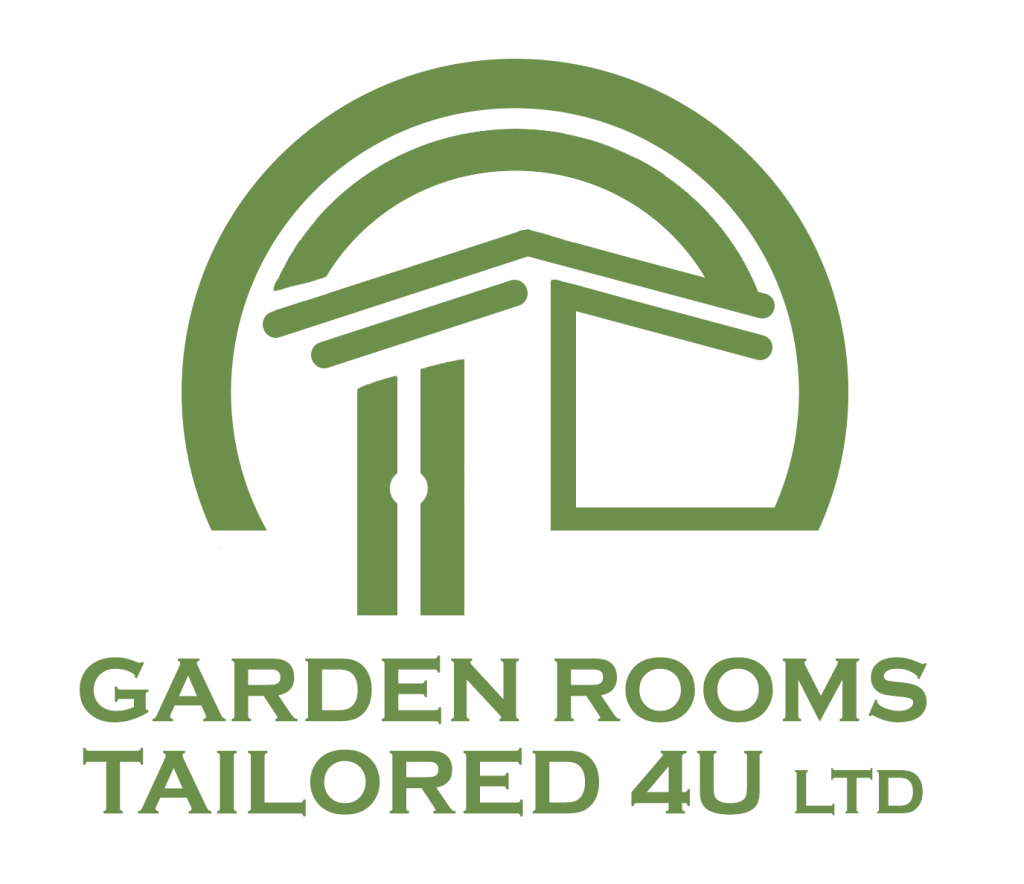Construction and Design
How long does it take to build?
Depending on the size of the structure, our builds are usually completed within 2 weeks, with a 3rd week required for our larger and more complex builds.
What are your lead-times?
Our lead-times are usually 4-6 weeks from placing the order. If you require a quicker turnaround, just let us know and we’ll do our best to help.
What are the heights of your buildings?
Our buildings are typically constructed with an external height of 2.5 metres. The front of each building is the highest point, designed to allow water to flow from front to back into the rear guttering, complying with building regulations. We also offer extended height options of 2.7m or 3m for extra headspace.
What is the largest/smallest building you make?
We build garden rooms up to 30 square metres internally. The smallest building we offer is 2.5m x 2.5m.
How long does the design consultation take?
A design consultation usually lasts just over an hour.
What will happen at my on-site design consultation?
During your on-site design consultation, we will visit your home and typically start by assessing your garden. We will evaluate the available space and advise on the size of the building that can fit. Additionally, we will assess access and provide a quote for both electrical and network connections from your home to the garden room.
The consultant will also bring samples of our building materials, conduct a thorough design consultation, perform a site survey, and answer any questions you may have.
Will I be given a quote at my design consultation?
Yes, your design consultant will provide you with a price for both the building and the electrical/network connection during the consultation. A complete, no-hidden-extras quote will be given and is valid for one year, including CAD drawings.
On what days do you perform design consultations?
We offer on-site design consultations from Monday to Saturday, including evenings and weekends. If you would like to discuss booking a consultation, please submit a design consultation enquiry.
Site Requirements and Preparation
What preparation/clearance work do we need to do?
We ask that the site is clear of existing structures, trees and shrubs etc. If this is difficult for you, we are always happy to quote for this service.
My garden is on a slope, can you still build?
Yes, we can build on a slope up to 300mm across the structure and also front to back. If your garden slopes more than this, we will discuss the best options for you during the site visit.
How close can my garden room be built to a wall, fence, boundary, or obstacle?
With our construction methods, we can build your garden room as close as 400mm to any solid boundary or obstacle.
I already have a concrete base in place. Is this okay?
Yes, as long as the concrete slab is the correct size, free from cracks, and at least 4 inches deep. If your existing base is too high, the building may exceed 2.5 meters and require planning permission. Your design consultant can advise you on your base and any necessary adjustments.
Do I need to remove a shed base before a design consultation?
No, our design consultants can work around any sheds, decking, garages, bases etc. that might be in the way. We will just ask you to send a photo of the ground under the obstacle once it has been moved, before your base is installed.
Technical Specifications
What is your flooring system like?
Our garden room floors are designed to sit off the ground, eliminating the risk of rising damp. They feature 75mm polyurethane insulation.
For the interior, we fit an underlay followed by your choice of flooring. The floors are incredibly strong, with a load capacity of 300kg per square metre. For heavy use or greater weight demands, additional foundations are recommended and also available. We also offer upgrades on timber flooring if a home gym is required.
What flooring options do you offer?
We offer an exceptional range of flooring options for our garden rooms, ensuring style and quality as standard. Choose from:
- Oak laminate in various colours
- Oak engineered wooden flooring
These options provide a stylish and durable foundation for your garden room.
What are the U-values of your buildings?
Our garden room buildings are fully insulated and highly effective at preventing heat loss. The thermal performance of a building is measured by its U-Value. The lower the U-Value, the better the material insulates against heat. Here are the U-Values for our buildings:
- Glazing on Windows and Doors: 1.2
- Walls: 0.35
- Roof: 0.35
- Floor: 0.22
These values ensure excellent thermal efficiency for your garden room.
What maintenance is required on the wood cladding?
None at all! Our standard Scandinavian Redwood cladding is slow-grown and pressure-treated, ensuring it requires no maintenance. Over time, the wood will naturally silver off. If you prefer to change the colour, you can easily do so with a water-based UV oil or wood stain.
Can I put skylights in the roof?
No, we use a solid insulated roof system, which does not allow skylights.
Can I stand on the roof?
Yes, you can stand on the roof of one of our structures; however, we ask you to be careful of the plastic cover caps, which are glued to hold the perimeter of your roof down.
Can I have a sedum roof?
Absolutely, we offer a sedum green roof as an optional extra for our garden room buildings up to 3.5m deep. The cost varies depending on the size of your building.
How many sets of keys will I receive for my garden room?
You will typically receive 3 sets of keys.
Usage and Additions
Can I have a toilet and/or kitchen in my garden room?
Absolutely, we liaise with our own plumbing team to make sure everything runs smoothly on all installations. We can also supply and fit kitchens to your chosen specification.
Can a modern garden room be attached to my house as an extension?
Unfortunately, not, due to the construction of our rooms, they need to remain free-standing. We can only build up to 400mm to any solid obstacle (such as your house or a wall).
Can I put a hot tub in my garden room?
We do not recommend placing a hot tub inside our garden buildings. The structurally insulated floor panels are not designed to support the weight of a hot tub, and the warm water can cause excess moisture build-up, leading to damp and mould issues.
However, we offer a side canopy option on our site buildings, which provides the perfect external enclosure for a hot tub.
Planning Permission
How do I tell if my garden room needs planning permission?
Determining if your garden room requires planning permission depends on your property’s permitted development rights and the area you live in. Our team can provide guidance during your free design consultation, or you can check with your Local Planning Office for more information.
Why doesn’t my garden room need planning permission?
Planning permission is generally not required for garden rooms because they fall within permitted development rights. Our garden rooms are classified as ‘outbuildings,’ which means they can be constructed on your property without needing permission, provided you comply with permitted development guidelines.
I need garden room planning permission, what do I do?
In the rare event that you need planning permission for your garden room, we’ve got you covered! We’ll handle everything for you, providing the planning authority with all the necessary information, including CAD drawings. We manage all communications on your behalf, saving you time and hassle.
Reasons why you may need planning permission for your garden room:
Understanding permitted development rights is crucial. If your situation doesn’t fit within these conditions, you may need planning permission:
Listed or Designated Homes
Permitted development allowances apply only to houses, not flats, maisonettes, or other buildings. If your home is listed or in a designated area, these allowances may not apply. Designated land includes national parks, the Broads, Areas of Outstanding Natural Beauty, Conservation Areas, and World Heritage Sites. Article 4 directions in some areas may remove your permitted development rights, so check with your local planning authority.
Designated Land
Permitted development may be restricted on designated land, which includes national parks, the Broads, Areas of Outstanding Natural Beauty, and World Heritage Sites. In these areas, garden rooms must be over 20 metres from any house wall and not exceed 10 square metres to qualify for permitted development. Garden rooms on the side of the house are not permitted.
Garden Room Heights
To fall within permitted development, garden rooms must be single-story and less than 3m in height. If built within 2 metres of your property boundary, they should not exceed 2.5m in height, which is the standard for all our garden rooms.
Your Garden Room Use
While you can use your garden room for various purposes, it should not be a separate, self-contained living accommodation to fall within permitted development. Commercial use will always require planning permission. Note that microwave antennas are not always allowed under permitted development.
Your Garden Room Location
Outbuildings, including garden rooms, are not permitted development if built in front of the principal elevation of your house (as it stood on 1 July 1948).
Your Garden Room Size
Outbuildings and additions must not exceed 50% of the total land area around the original house (as it stood on 1 July 1948). This includes sheds, extensions, and other outbuildings added by previous owners.
Obtaining a Certificate of Lawful Development
If you’re unsure about the legality of adding a garden room, we offer a Certificate of Lawful Development service. For a single charge of £500, our planning team will complete an application audit on your behalf. This certificate can be useful when selling your house or addressing neighbours’ concerns.
We are here to help
Garden rooms are our speciality. Our friendly and knowledgeable team are here to provide advice and direction, helping you determine what permissions you need for your project. Get in touch, we are glad to help.



